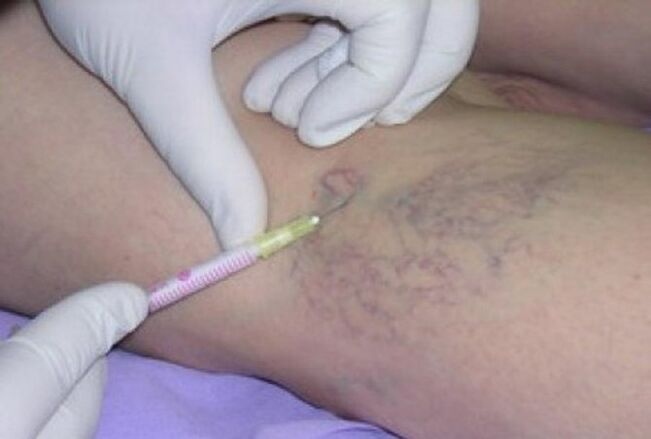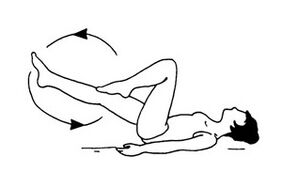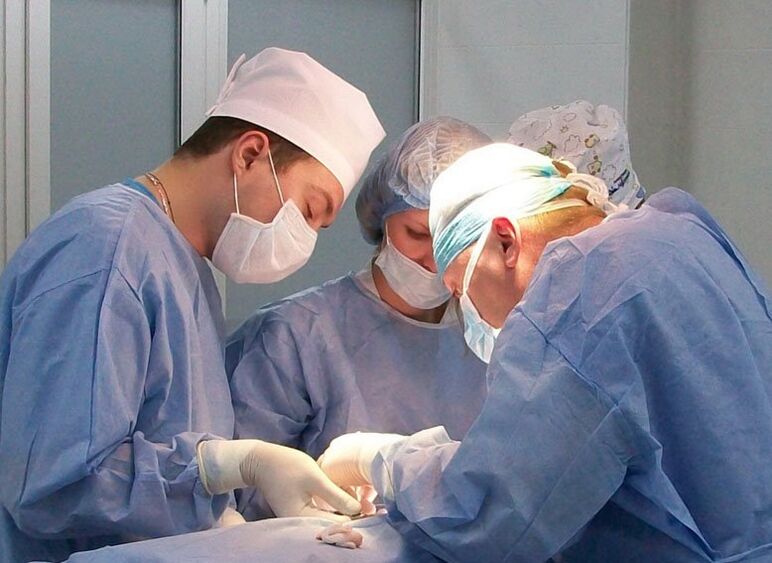
Varicose veins of the lower extremities are a chronic disease associated with bundles of dilation of blood vessels in the legs. The main causes of varicose veins are genetic predisposition, overloading, or a sedentary lifestyle. Women are more likely to develop the disease, especially after childbirth. In men, varicose veins in the legs may be due to the presence of arteriovenous communication.
When the first signs of varicose veins appear, including visible nodular changes in blood vessels, pain and swelling in the legs and feet, it is advisable to consult a doctor. After an examination and an accurate diagnosis, your doctor will determine how to treat varicose veins in each case.
Conservative treatment
Conservative treatments for varicose veins are varied and can only alleviate the symptoms of the disease, not the cause.
diet and stress

Special exercises for varicose veins that anyone can do at home. They are designed to strengthen the leg muscles, which help keep the veins in good shape. The most effective of these are:
sports bike"
- Bicycle: Lie on your back, alternating your legs in a circular motion.
- Roll a tennis or baseball on the floor with your feet. Microcirculation can be improved if special massage balls are used.
- When standing on the toes, the calf muscles are well trained to compress the varicose veins.
- Swimming with a surfboard will help bring all the muscles of the legs into excellent body shape while putting minimal stress on them.
A diet designed to lose excess weight, rich in plant fiber, and limiting intake of animal fats and carbohydrates can reduce the burden on the legs and can be successfully used to treat varicose veins at home.
Knitwear (knee socks, stockings) used to treat varicose veins varies in the degree of compression. To wear it properly at home, you usually have to use special equipment. It is necessary to wear underwear throughout the day and only take it off at night. The principle of action is based on external compression of varicose vessels in the legs and improvement of blood outflow. In lieu of medical knitwear for varicose veins, you can use a regular elastic bandage wrapped in a spiral from fingertips to mid-thigh with a heel grip. It is important that the new turn overlaps at least half of the previous one.
Pneumatic massagers consist of several cuffs that supply air under pressure and are effective in treating varicose veins in the early stages of the disease. In this case, a compression method is used, which improves blood circulation and reduces swelling. You can use this device at home.
drug
The use of ointments and tablets for varicose veins in the legs is recommended only at the onset of the disease or when complications arise.
The main drug classes include:
- Verotonics increase the tone of the veins, reduce swelling and improve the outflow of peripheral blood.
- Medications that improve microcirculation are effective in oral or dropper form.
- Antiplatelet drugs to prevent blood clots. These include heparin ointment.
- NSAIDs reduce the pain and swelling of varicose veins.
The use of all medicines must be approved by a doctor as there may be side effects.
There is no cure for varicose veins using traditional methods, only slowing the process and delaying the onset of serious complications such as thrombophlebitis.
When is surgery required?
Surgical treatment of varicose veins does not always involve open surgery. Thanks to modern advancements, it is possible to remove leg varicose veins on an outpatient basis. The following radical treatments are most commonly used:
- Sclerotherapy is based on introducing a substance into the lumen of the affected vein, sticking it together and closing it from the systemic circulation. This method is suitable for small diameter vessels in the early stage of the disease. The recurrence rate reaches 30%.
- Radiofrequency ablation and laser ablation are modern and effective treatments that can lead to destruction of the lining of the veins. It is performed under local anesthesia and leaves no traces on the skin.
- Phlebectomy is the direct removal of a vein through a small incision. This method can cure varicose veins, but gradually fade out of people's attention, because the surgery is traumatic and the recovery period is long.

How Traditional Medicine Can Help
Varicose veins in the legs are a fairly common problem, including in pregnant women, and treatment using traditional methods is contraindicated. That's why so many folk remedies recipes have been created to lessen the manifestations of this disease at home:
- Put a decoction of regular hops into a glass three times a day. To prepare it, you need to take a tablespoon of crushed cones and pour boiling water over them.
- When treating with apple cider vinegar, you must rub your feet daily for a month while drinking a teaspoon of apple cider vinegar dissolved in water.
- Sliced green tomatoes or grated raw potatoes can be spread over the compacted bumps overnight.
- The substances that make up horse chestnut have a tonic effect on the veins. To make a liter of tincture, you need to pour 50 grams of inflorescence with vodka for two weeks. Take 2 tablespoons 3 times a day.
- To make an effective salve, you need to take a teaspoon of dried St. John's wort, coltsfoot, chamomile, meadowsweet and chicory, pour 100 ml of water, boil and mix with badger fat. Use 3 times a day for a week under a plastic bandage.
Our grandmother's recipes don't always work, but they allow you to treat varicose veins at home when nothing else is possible. Do not abuse, it is best to contact a vascular surgeon to review treatment.
In the development of varicose veins, genetic factors, unhealthy lifestyle and excessive stress on the legs play a role. To reduce the likelihood of this disease and slow the progression of symptoms, you can engage in special exercise and diet. But varicose veins can only be cured with surgery after the exam is done.

















